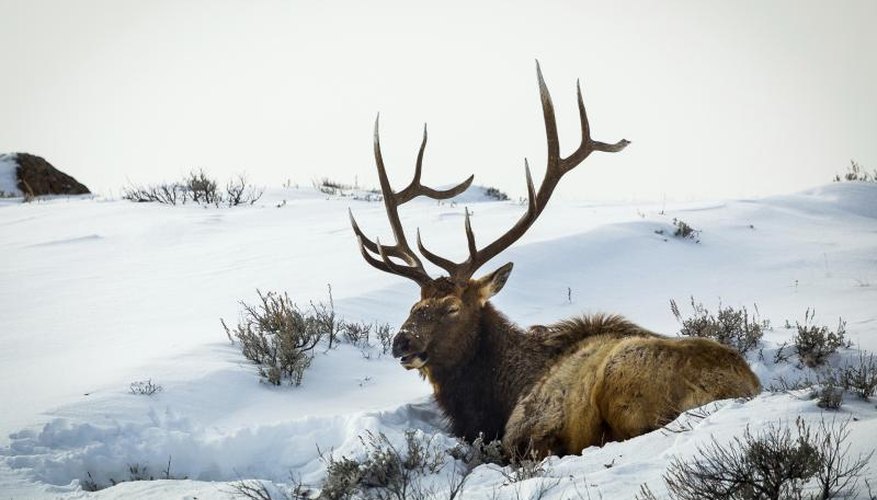
The most accurate way to tell an elk’s age is by examining his teeth. While it is difficult to determine the age of an elk accurately when viewing him at a distance, his rack provides some clues about his age. Deducing the age of older bucks is much more difficult than determining the age of young bucks.
Tips from Teeth
Determine the age of bucks under 4 years of age by examining the ratio of temporary and permanent teeth; at more advanced ages, tooth wear provides clues, but not infallible data. Elk have two large, permanent incisors in the front of their mouth by the time they are 18 months old. By 2 ½ years of age, the only remaining temporary teeth are the canines, which are replaced with permanent canines by 3 ½ years of age. Figuring out the age of older elk is not possible without detailed examination of the teeth. However, elk over 8 ½ years of age are likely to have worn their first molars flat.
Answers from Antlers
Antler development primarily depends on a buck’s health and ability to find food. Although the number of tines present on each antler is not indicative of an elk’s age, older bucks usually have more tines than younger bucks do. Bucks produce their first antlers during their second summer. Called “spikes,” these thin, non-branching antlers may grow up to 20 inches long. During their third summer, bucks produce their first branched antlers. By the time a buck is 7 years old, he may have six tines on each antler.



